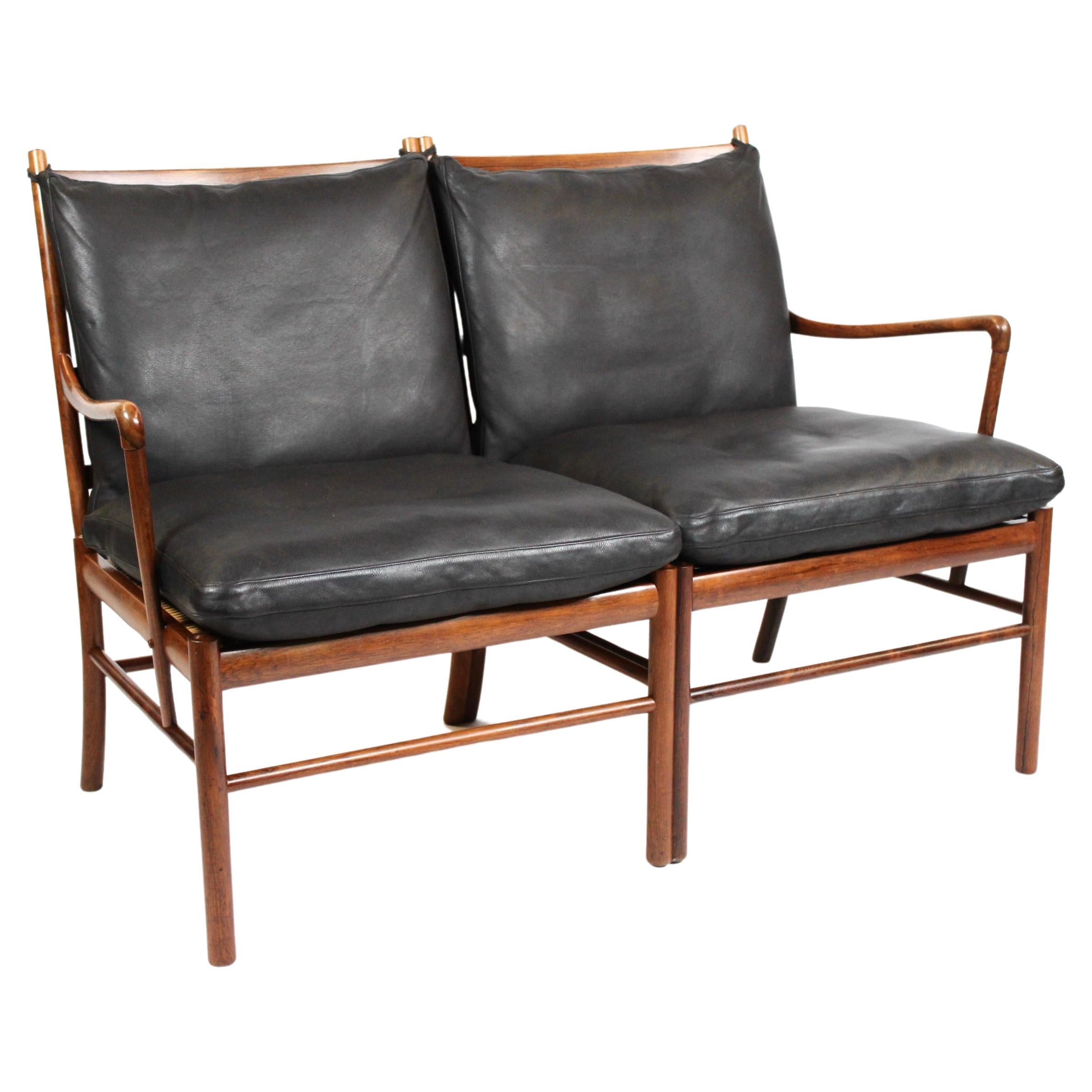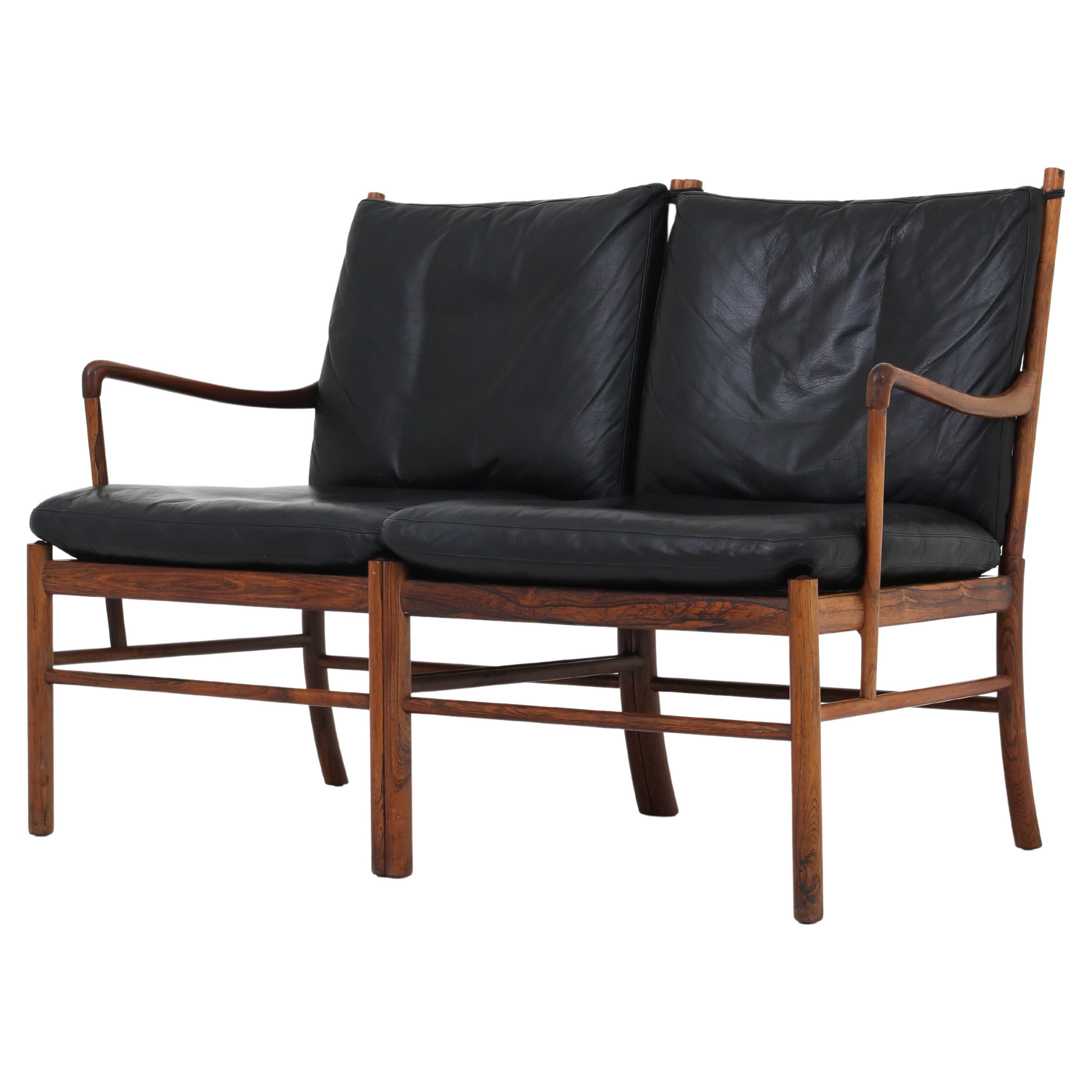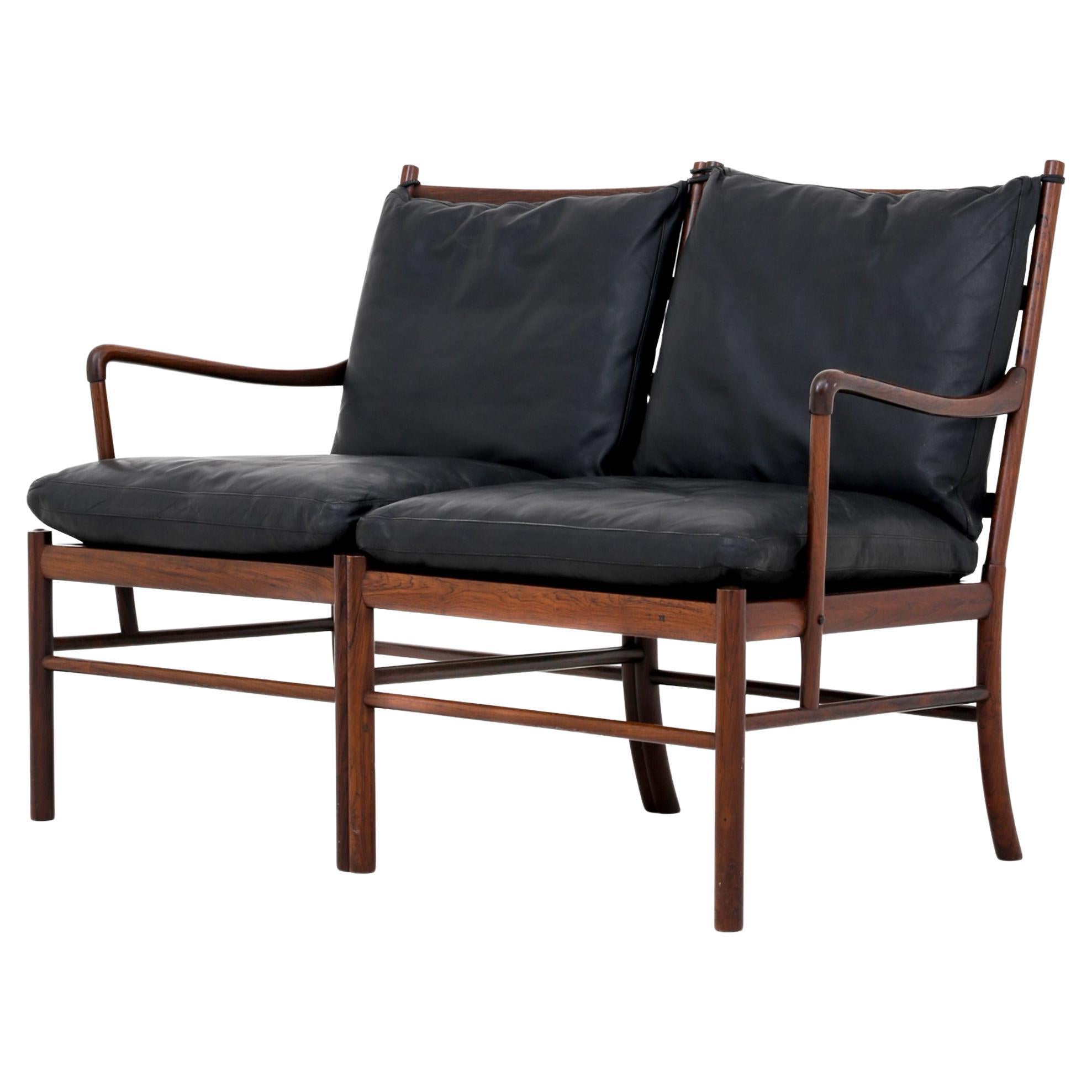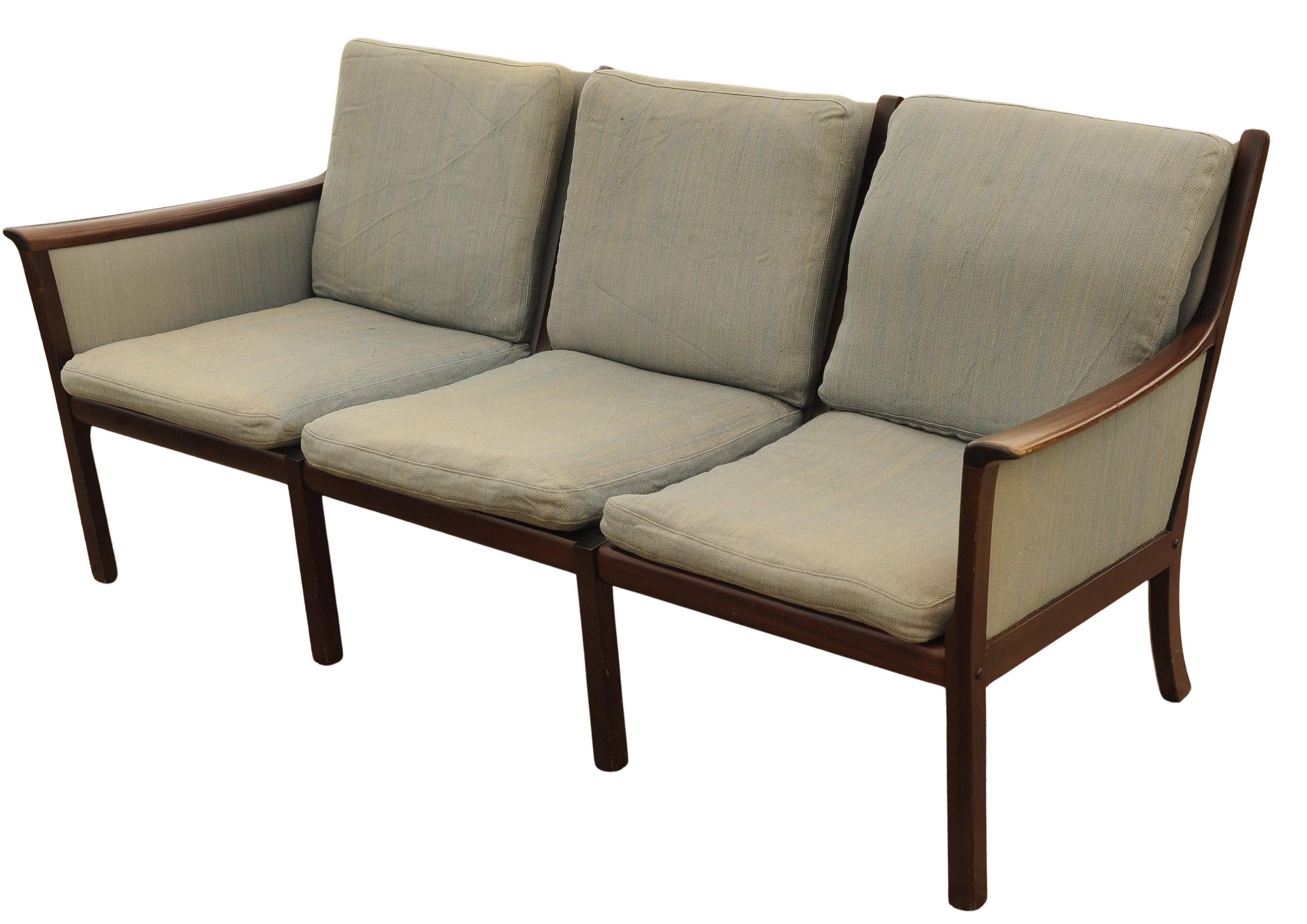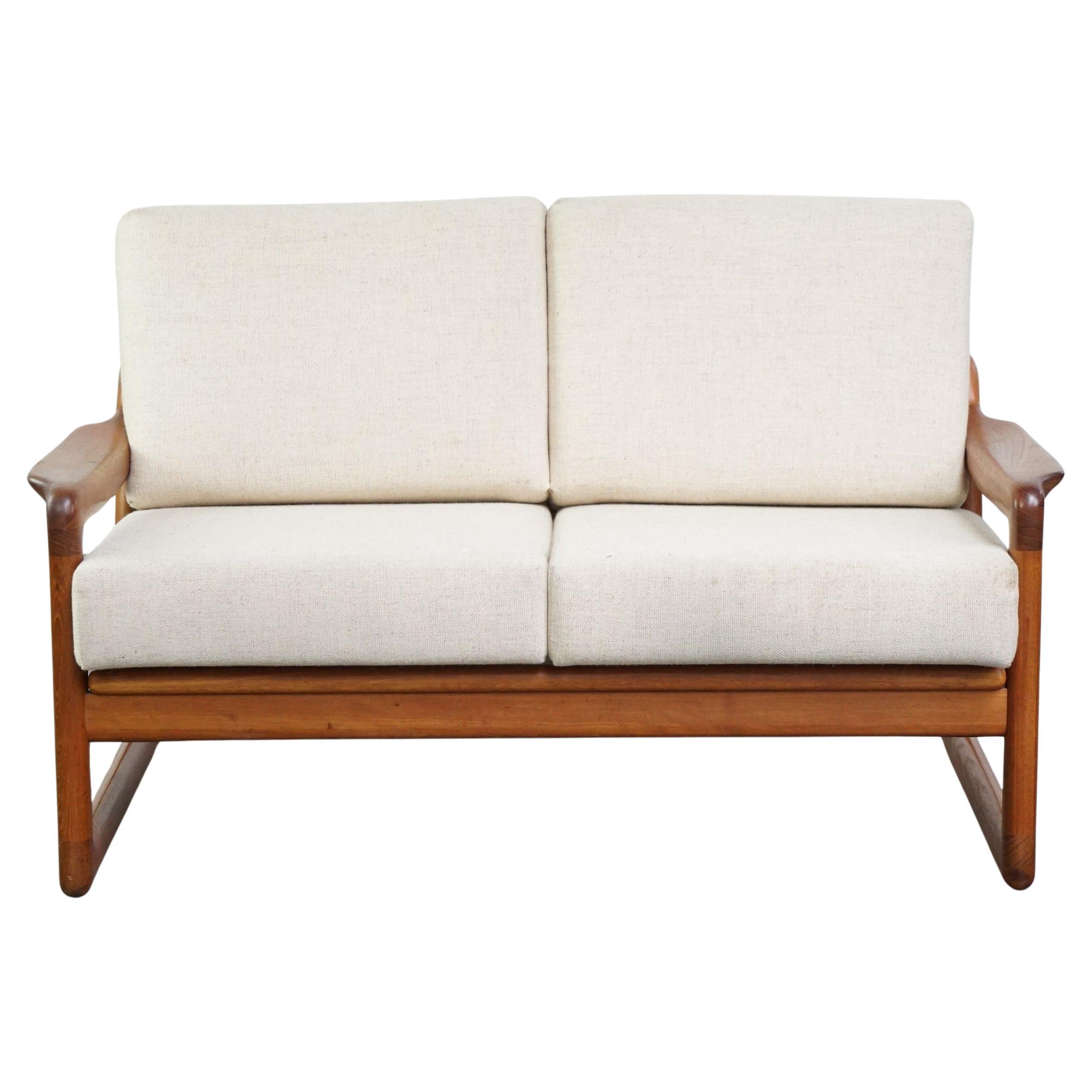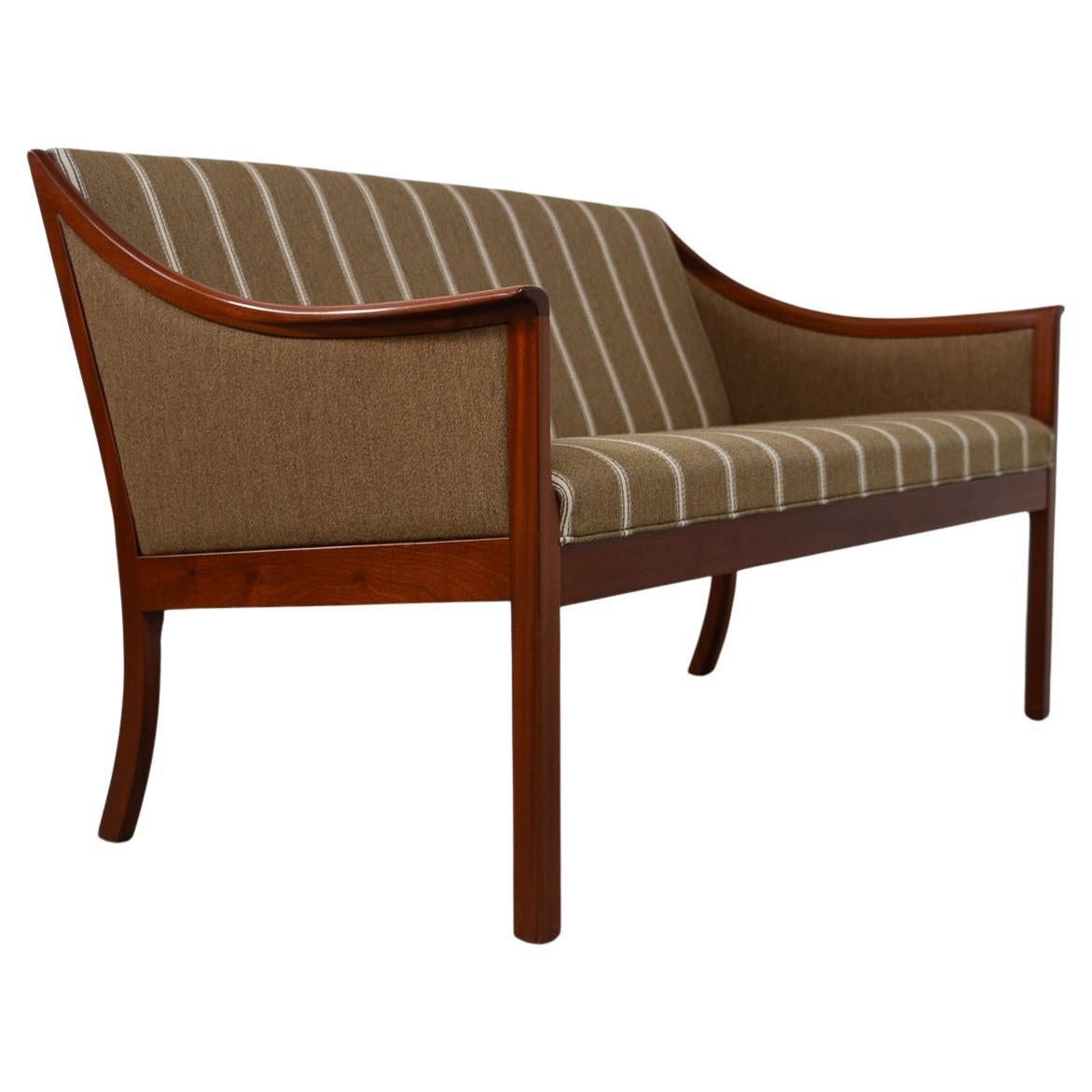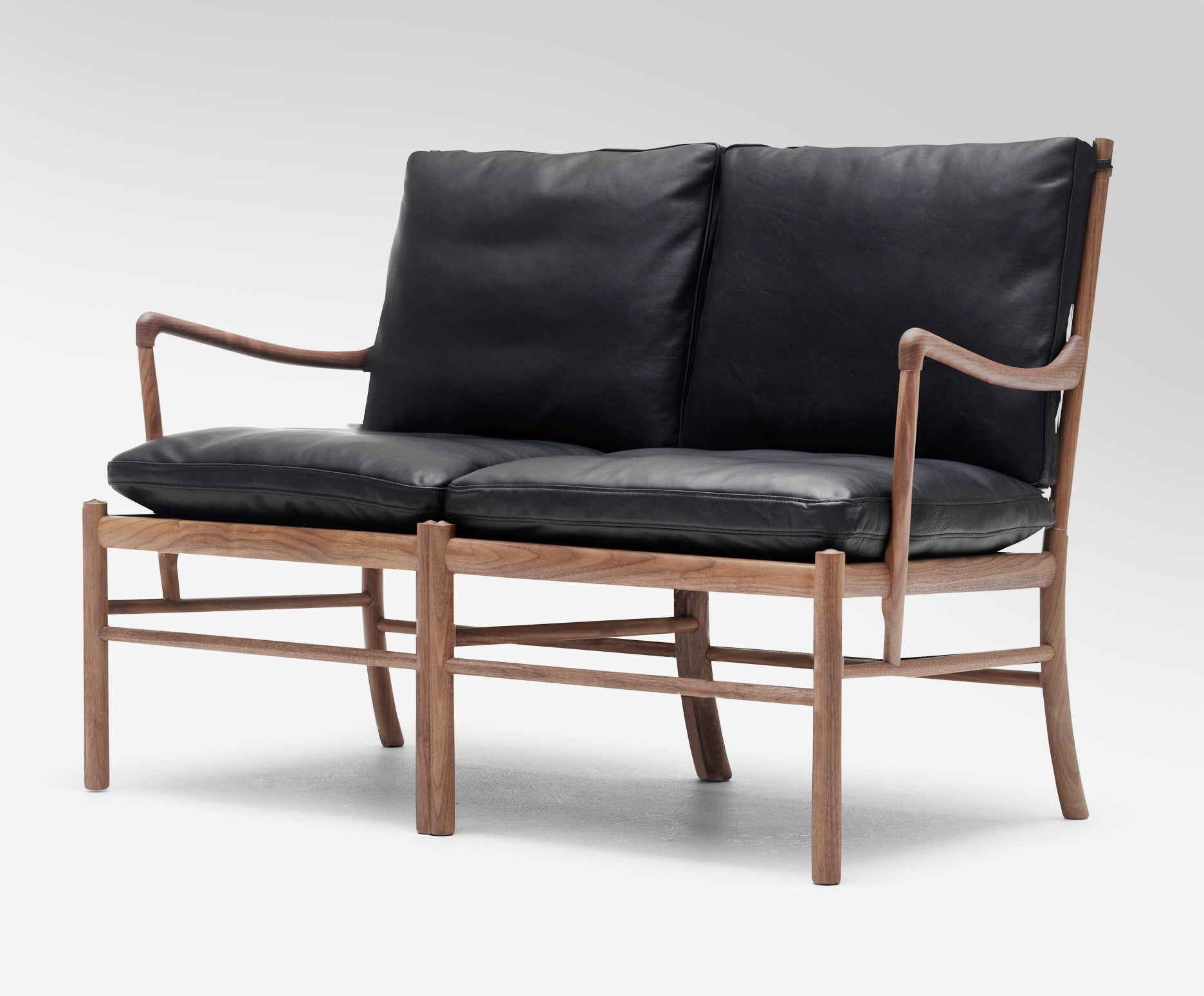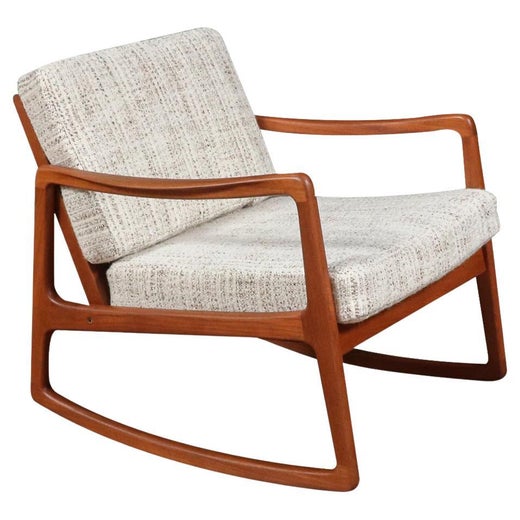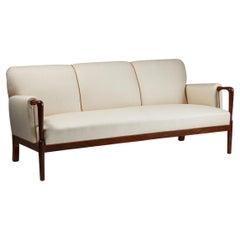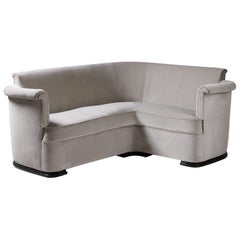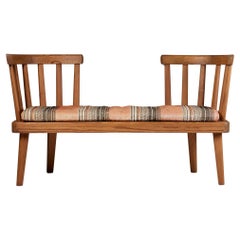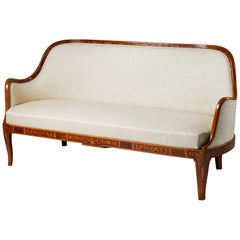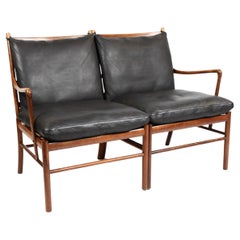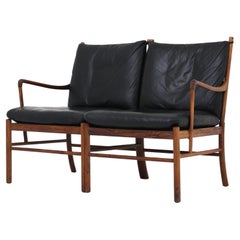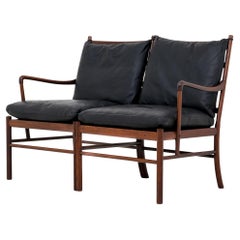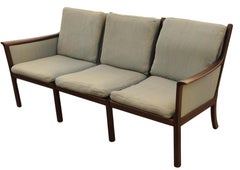Sofa “Colonial” Designed by Ole Wanscher for P. Jeppesen, Denmark, 1950s
About the Item
- Creator:Ole Wanscher (Designer)
- Design:Colonial SofaColonial Series
- Dimensions:Height: 23.63 in (60 cm)Width: 48.63 in (123.5 cm)Depth: 25.99 in (66 cm)Seat Height: 16.93 in (43 cm)
- Style:Mid-Century Modern (Of the Period)
- Materials and Techniques:
- Place of Origin:
- Period:
- Date of Manufacture:circa 1950
- Condition:Refinished.
- Seller Location:Stockholm, SE
- Reference Number:1stDibs: LU1006620579512
Colonial Sofa
In 1964, Danish designer Ole Wanscher (1903–85) created for P. Jeppesens a successor to his popular 1949 Colonial chair that maintained its high quality of craftsmanship with a little extra room. The two-seater Colonial sofa, with its loose cushions on a cotton webbing base and elegant double center wooden legs, is an update on a nostalgic style that channels the functionality of Scandinavian mid-century design.
The son of an art historian, Wanscher was fascinated with the history and culture of furniture, having studied under design master Kaare Klint and traveled the world to explore different vernacular traditions. Although he adopted the minimal tenets of modernism, he did not believe in totally overlooking the past. He drew on influences from ancient Egypt and China as well as the Shaker and Viennese Secession movements. He also published extensively on this heritage — his books include The Art of Furniture: 5,000 Years of Furniture and Interiors.
Wanscher was especially drawn to 18th-century English furniture created by designers like cabinetmaker Thomas Chippendale, who heavily inspired his Colonial series. Along with the chair and sofa, the series has a coffee table and footrest, all featuring the meticulous bracing that gives strength to their graceful designs. The Colonial sofa also shares the curved armrests that were a Wanscher signature. The refined two-seater was meant for the mass market yet manufactured to stand the test of time, both aesthetically and structurally. In 2015, Danish furniture company Carl Hansen & Søn reintroduced the sofa design as part of a relaunch of the whole Colonial series.
Ole Wanscher
A scholar and architect with the heart of an artist, Ole Wanscher helped define the functional, clean-cut style that formed the core of modern Danish furniture design. Influenced heavily by his world travels, Wanscher gained inspiration from English, Asian, Egyptian and traditional Shaker furniture, and he incorporated elements from these styles into his revered mid-century designs.
Wanscher’s deep respect for the use of traditional materials such as quality wood is reflected in his work, which is valued for being both beautiful and built to last. He was also a leader in the postwar “design for everyone” movement, creating many pieces intended for everyday life within the small confines of the average Danish household. Later, Wanscher became a prolific writer on the subject of furniture design. He is considered one of the most significant influences on the world of Scandinavian modernism.
The son of an art historian and a painter, Wanscher studied at the Royal Danish Academy of Fine Arts. From 1925 to 1927, Wanscher worked under the great Danish designer and professor Kaare Klint, who became one of the greatest stylistic influences on his output. Wanscher would go on to work as a professor at the academy from 1955 to 1973.
Wanscher founded his own furniture manufacturing company in 1929. Here he employed the top cabinetmakers of the day, most notably A.J. Iversen, with whom Wanscher collaborated for many years. While the workshop produced seductive handmade furniture with organic materials such as teak and mahogany, Wanscher intended to design durable seating, tables and more for the mass market — he was committed to making quality furniture available to a wider audience.
Of all of Wanscher’s designs, he is perhaps best known for his Colonial chair. This piece — which is part of a collection for Danish manufacturer P. Jeppesens that includes a sofa and a coffee table — exemplifies his penchant for combining minimalist design with traditional craftsmanship. Wanscher’s dining room tables, such as the Rungstedlund table, also epitomize the elegance of his work’s simple silhouettes and careful construction. These sleek tables serve as an ideal centerpiece for both modern and traditionally styled dining rooms, highlighting the versatility of Wanscher’s work.
Wanscher received a gold medal for his exemplary work at the 1960 Milan Triennale. He also received the Copenhagen Carpenters’ Guild Annual Award. Though Wanscher passed away in 1985, his iconic designs and scholarly writings remain relevant to this day.
Find vintage Ole Wanscher tables, seating and case pieces on 1stDibs.
- ShippingRetrieving quote...Shipping from: London, United Kingdom
- Return Policy
More From This Seller
View AllVintage 1930s Danish Sofas
Mahogany
Mid-20th Century Swedish Mid-Century Modern Sofas
Upholstery, Velvet
Vintage 1930s Swedish Mid-Century Modern Benches
Pine
Vintage 1920s Swedish Mid-Century Modern Sofas
Fabric, Mahogany
Mid-20th Century Finnish Mid-Century Modern Sofas
Upholstery, Wood, Lacquer
Mid-20th Century Danish Mid-Century Modern Sofas
Wool, Wood
You May Also Like
Vintage 1960s Danish Mid-Century Modern Sofas
Leather, Rosewood
Mid-20th Century Danish Scandinavian Modern Sofas
Rosewood
Mid-20th Century Danish Scandinavian Modern Sofas
Leather, Rosewood
Mid-20th Century Danish Scandinavian Modern Sofas
Steel
Vintage 1960s Sofas
Fabric, Wood
Vintage 1960s Danish Mid-Century Modern Sofas
Wool, Mahogany
